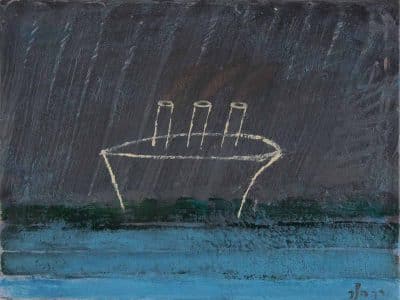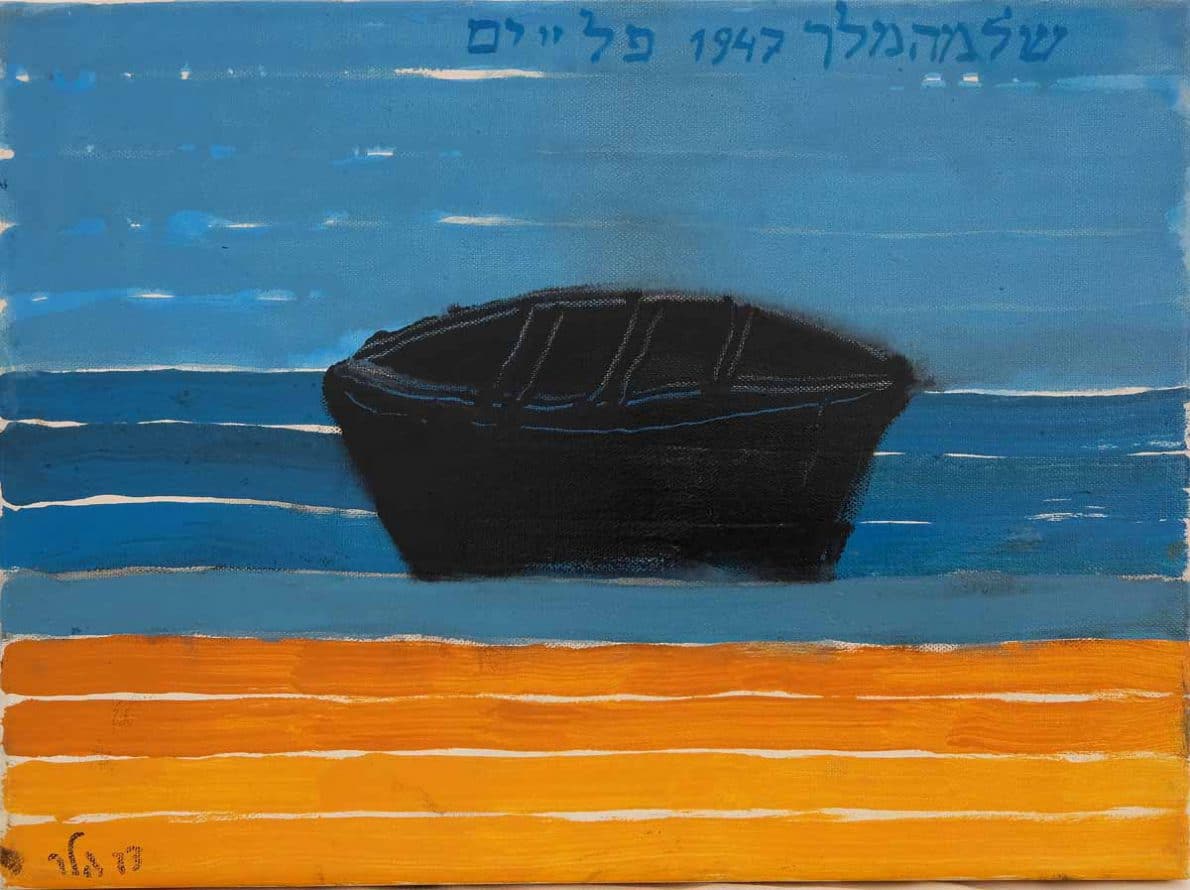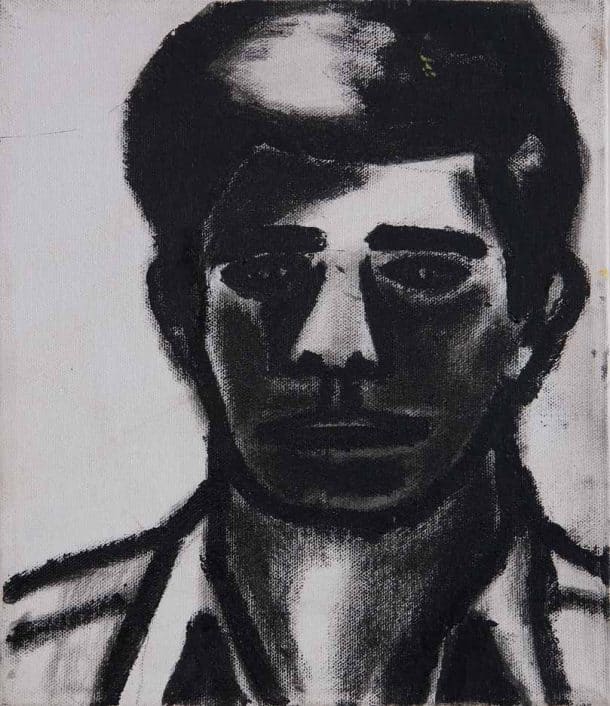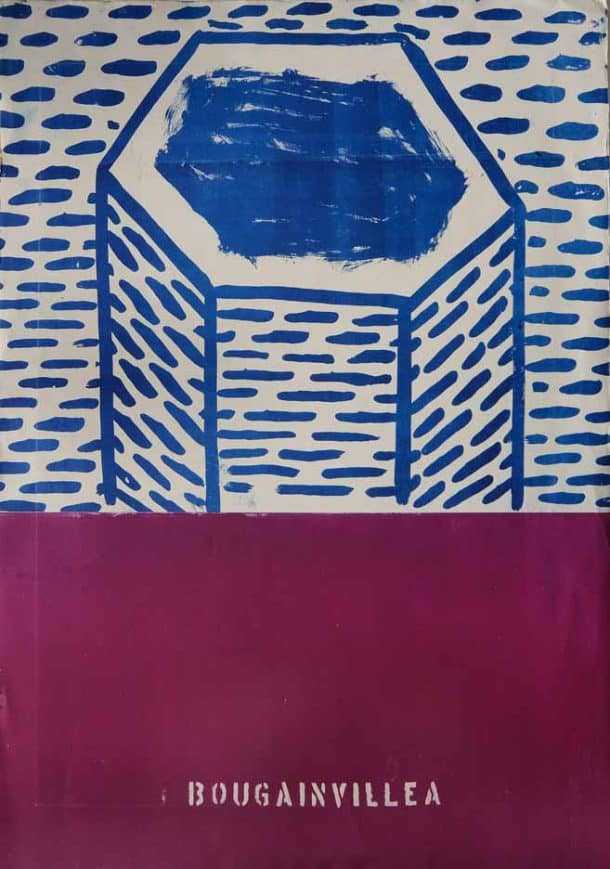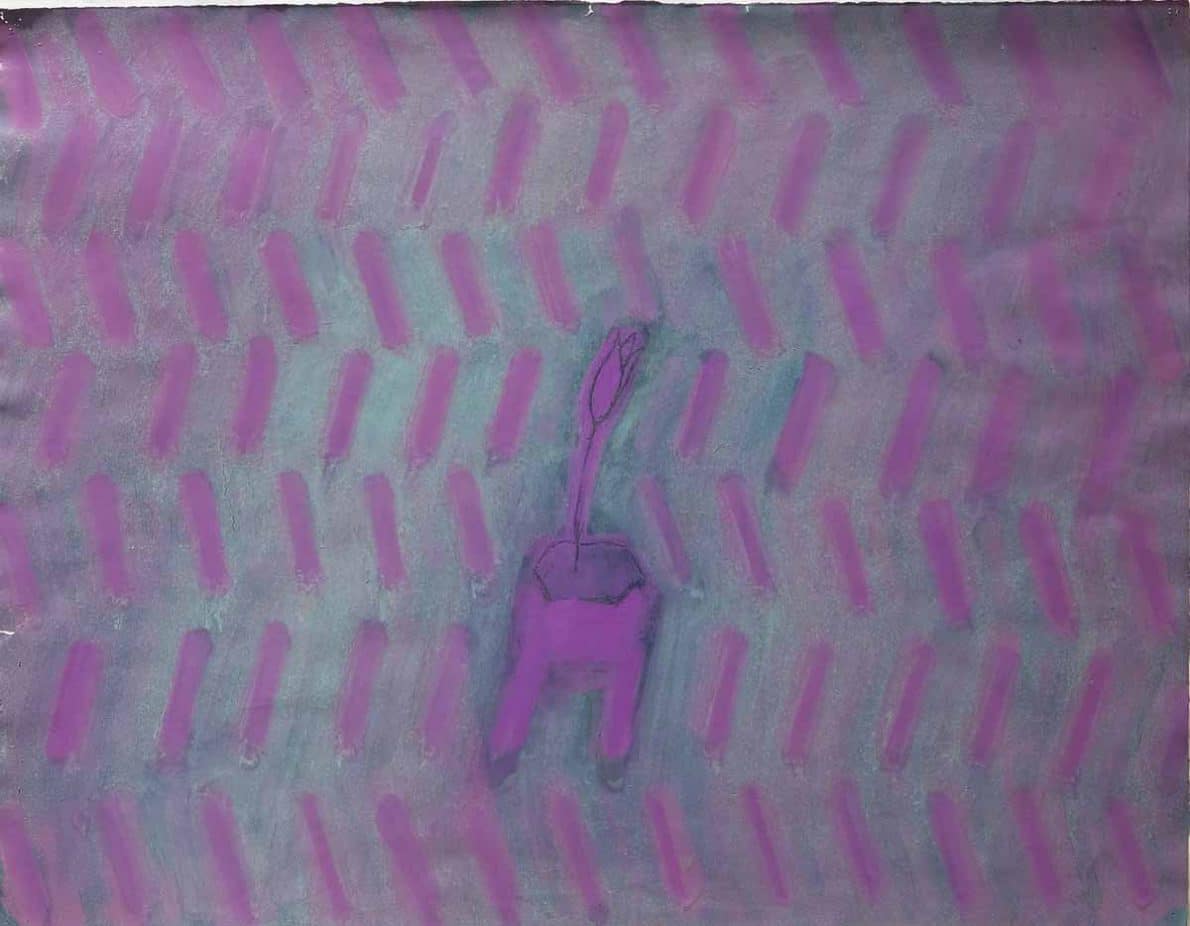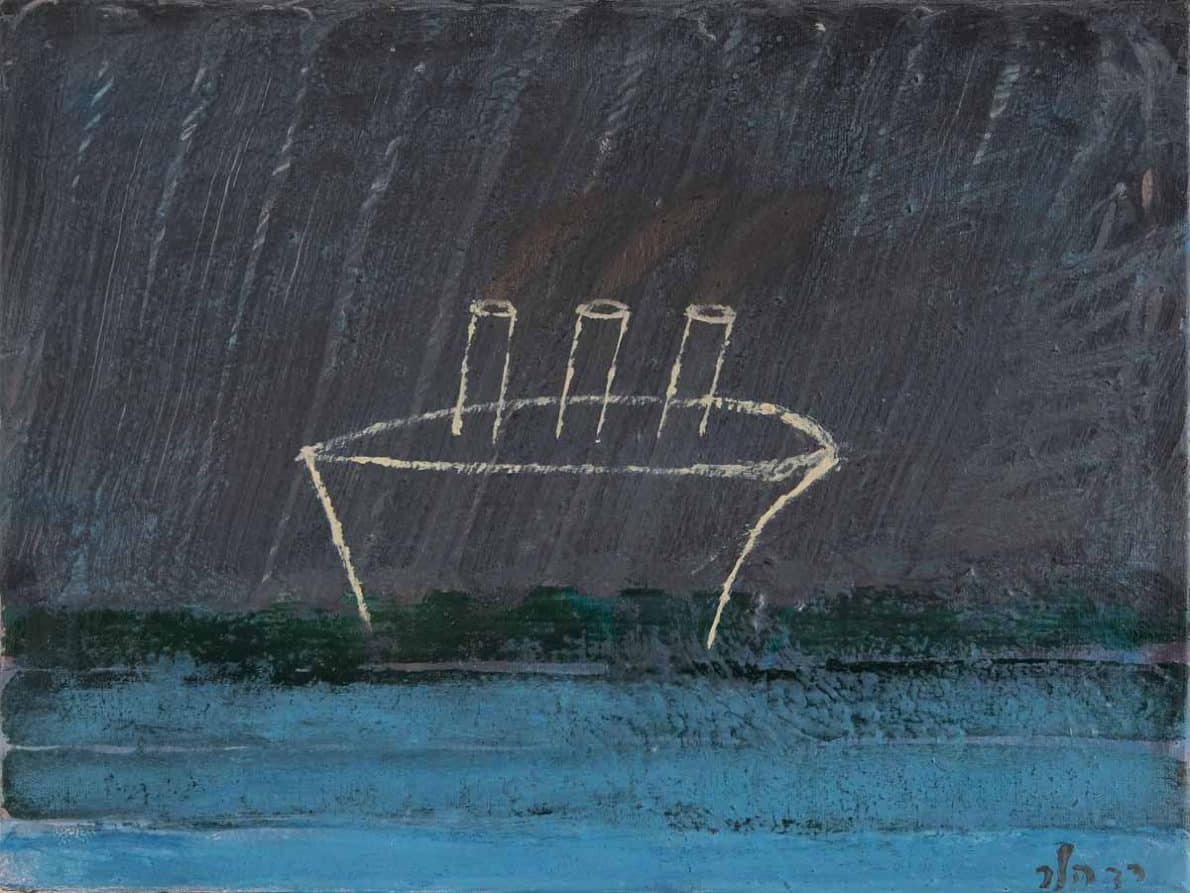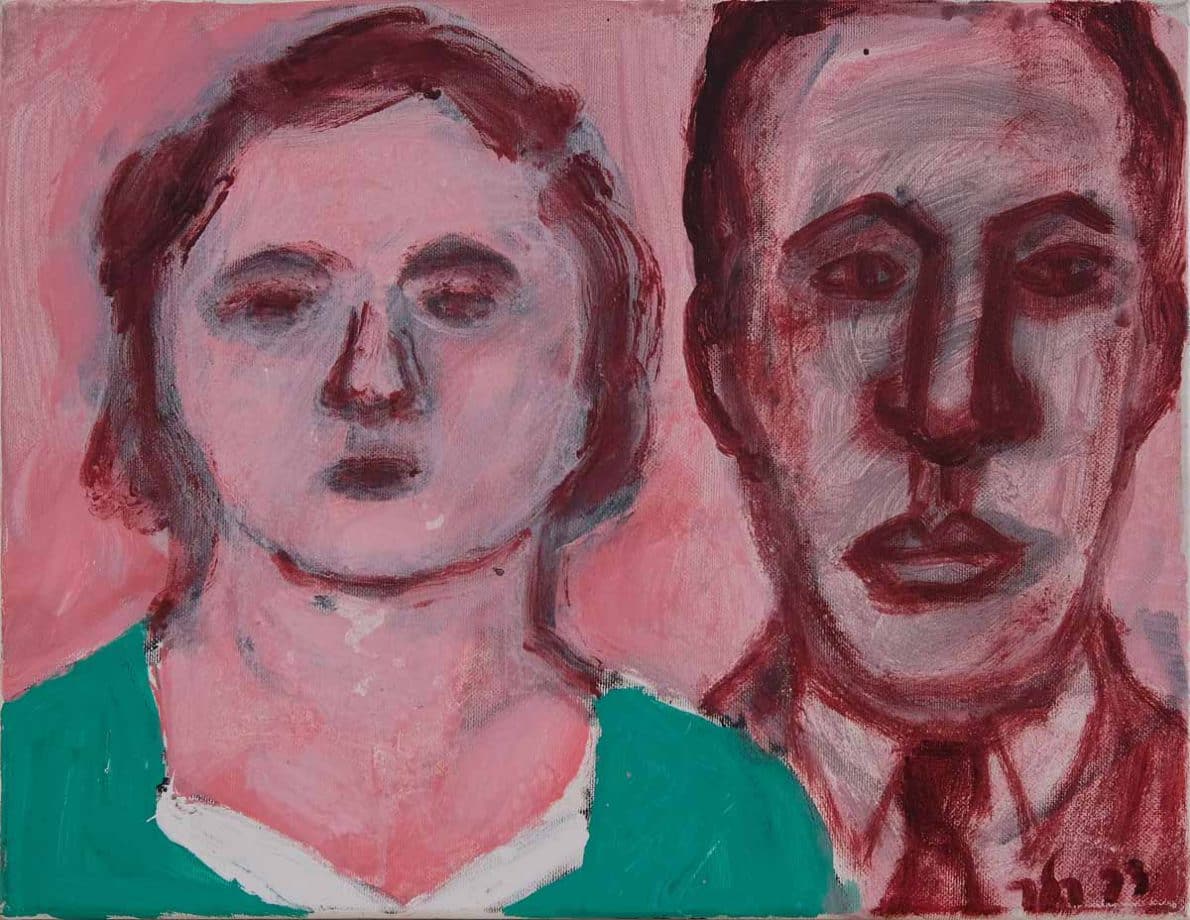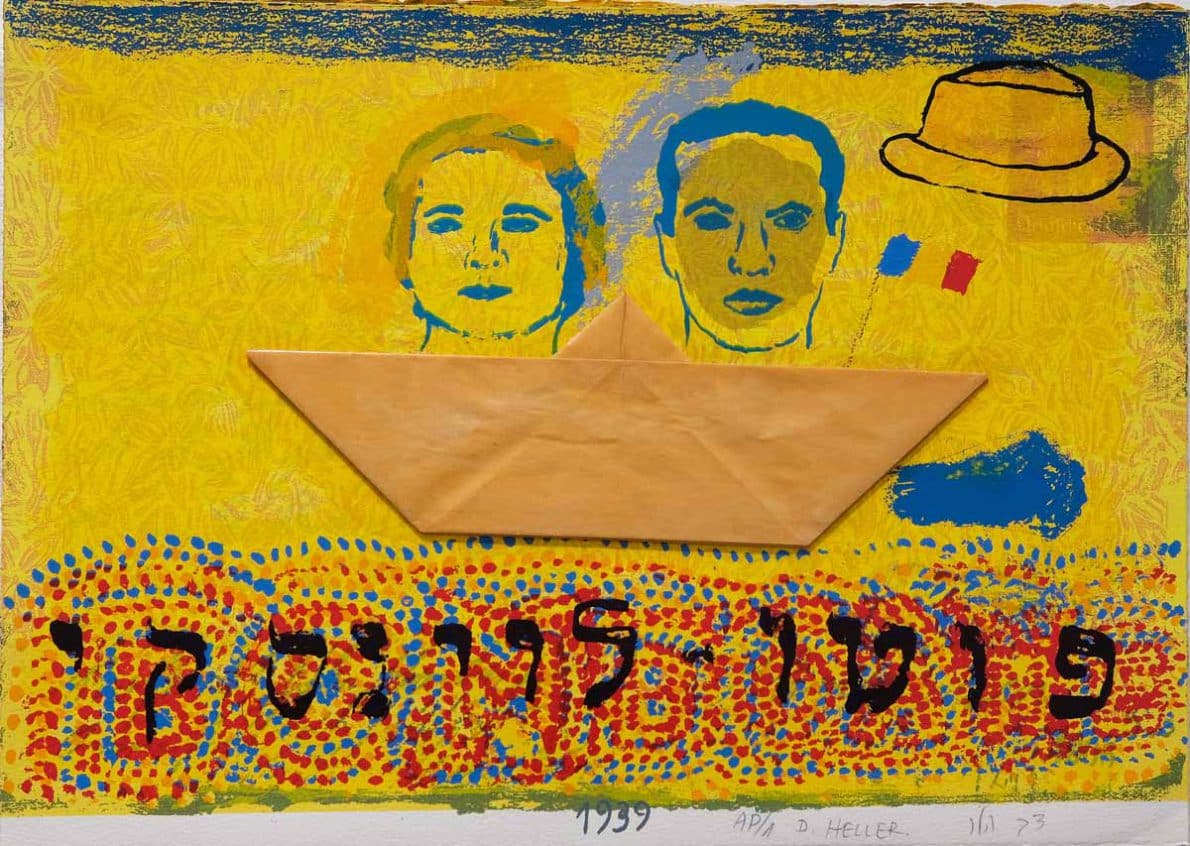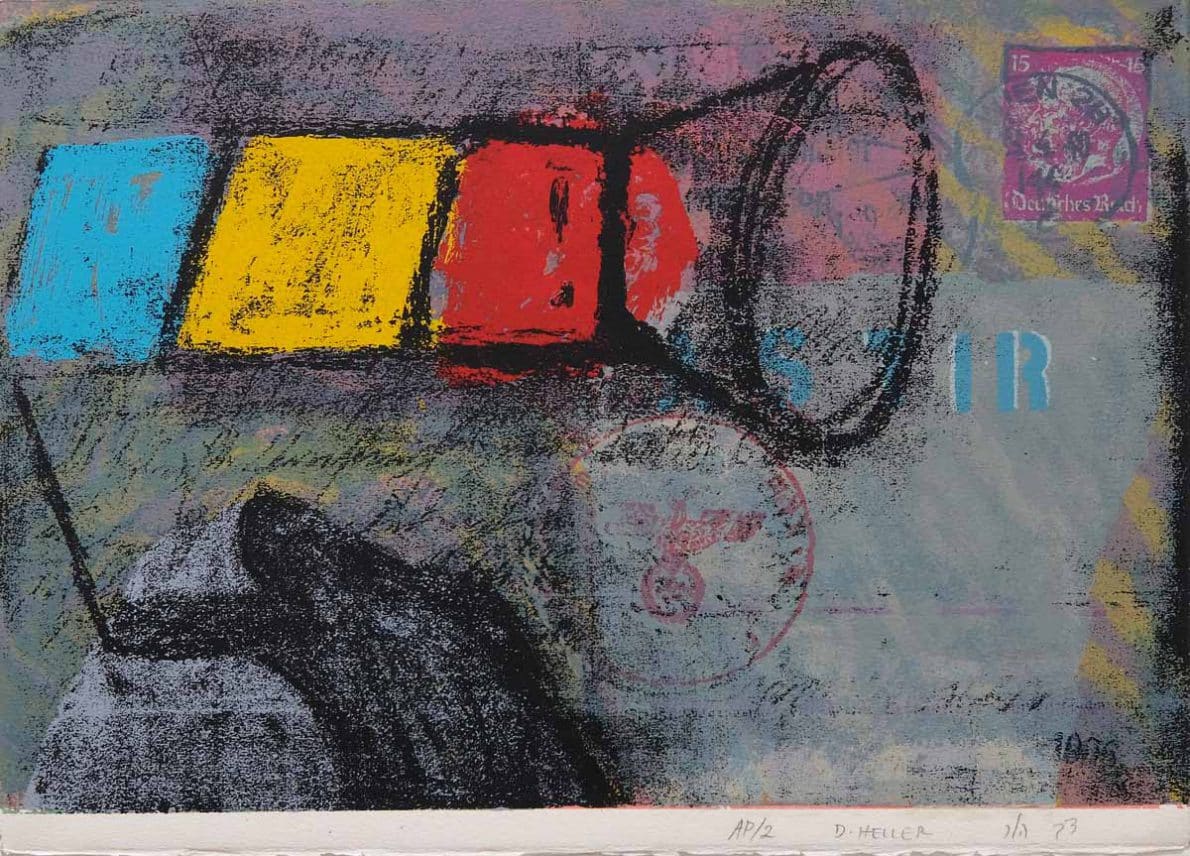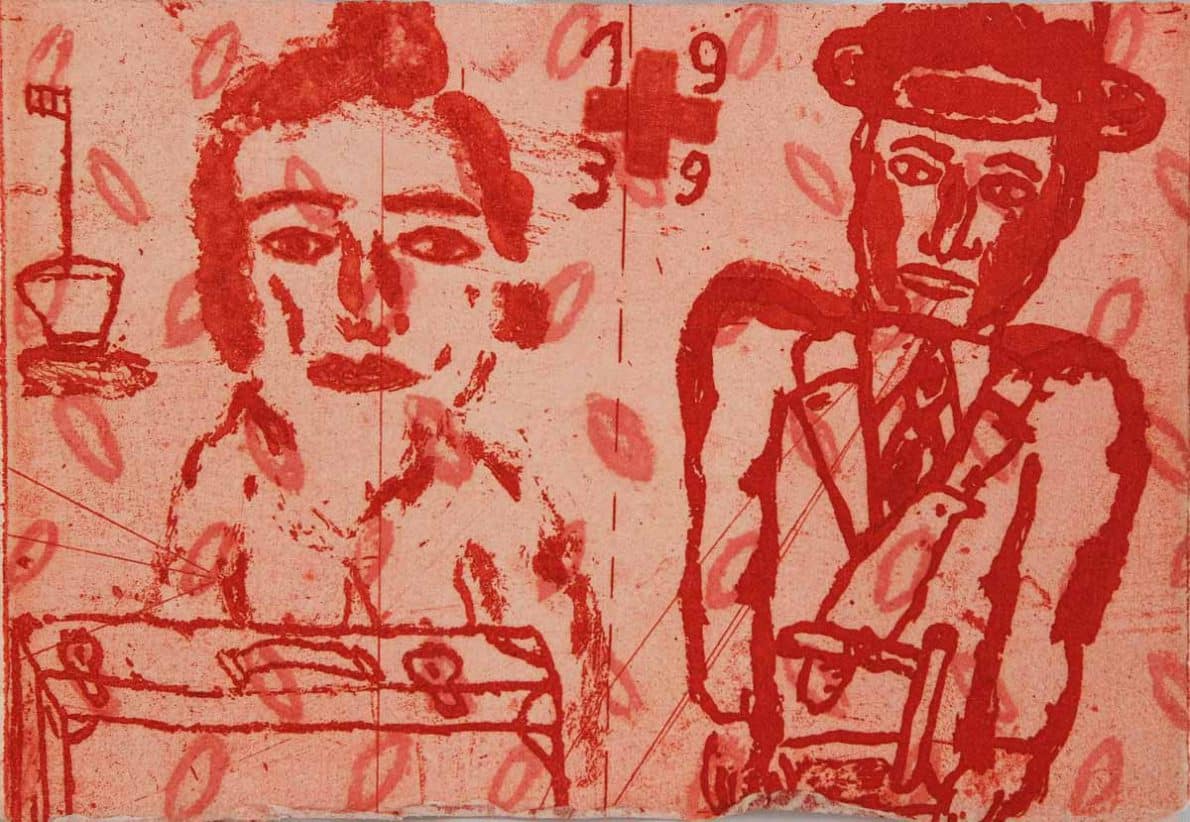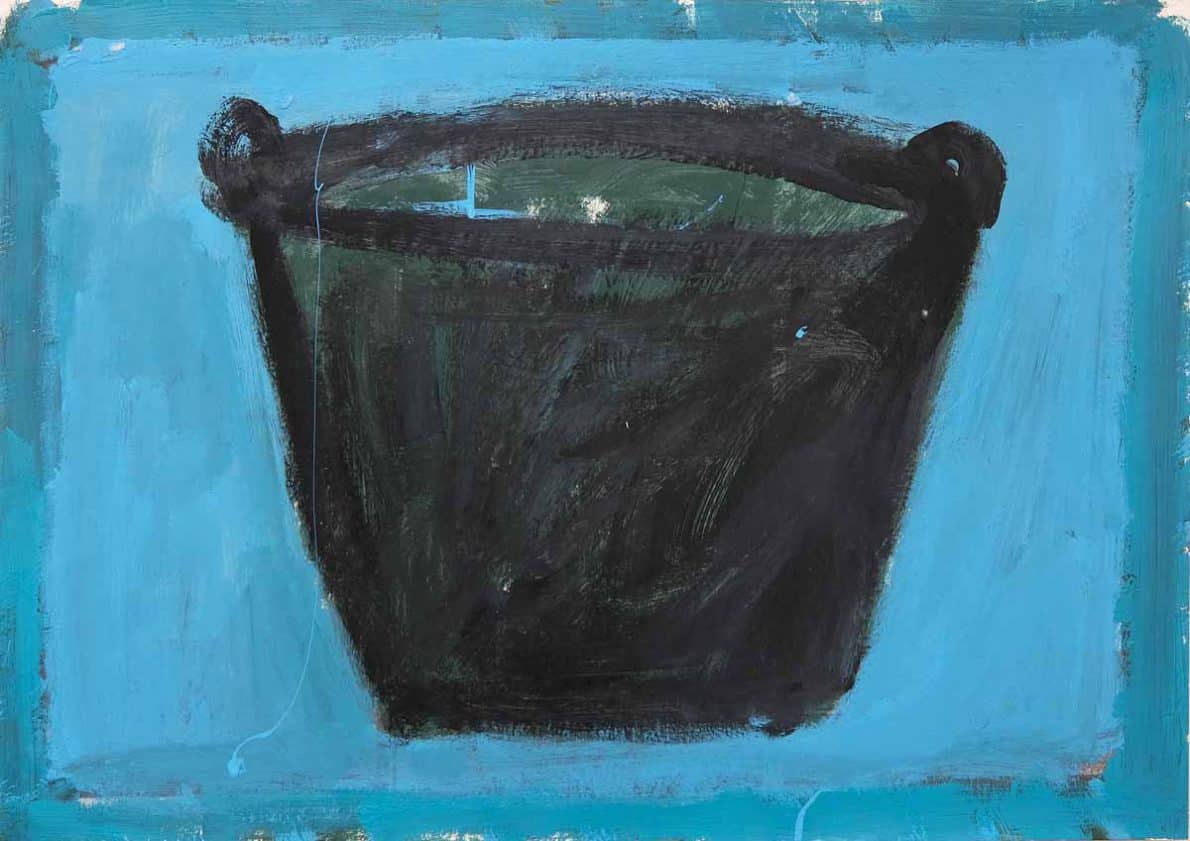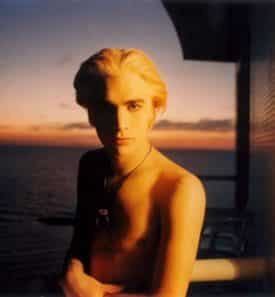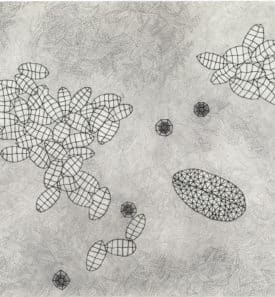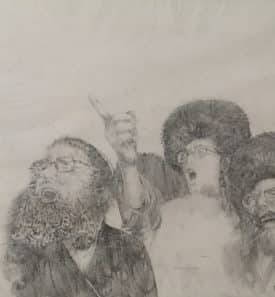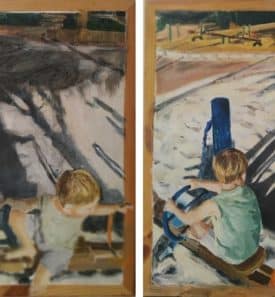Journeys focuses on the past twenty-five years of Heller’s work, particularly on the prints and the diverse techniques he used since the turn of the century at the Jerusalem Print Workshop, and on the paintings that accompanied the process.
Kibbutz Nirim, in the north-western Negev adjacent to the Gaza Strip, entered the map of Israeli art in the 1970s. It was thanks to the activity of Dov Heller, a member of Nirim, and a prominent figure in the conceptual art movement of that period. Heller founded an etching workshop in Nirim in the 1990s and for years it attracted artists from the Negev and elsewhere in Israel, who came there to make art and display it in the annual exhibition always held on the first of May, International Workers Day.
Dov (Dovaleh) Heller was born in 1937, in Bucharest, Romania. Less than two years later, his parents left for Palestine and made a three-month journey on the immigrant ship Astir. Meanwhile the toddler stayed with his aunt in Bucharest and, due to the outbreak of the Second World War, had to remain there. It was only in 1949, as a twelve-year-old, that he left Romania and joined his family in Israel. In recent decades that unusual chapter in Heller’s biography has become a central theme in his oeuvre, especially in the series Primăvară, Mother Loved Cinema, and Hugging, shown in the exhibition. Despite the biographical context, the paintings and prints are not highly narratival. They show only a few symbolic images that recur in different permutations, executed in a sort of naïve style: a ship, a flag, a bird, and a postcard, all signifying movement and wandering, journeys by sea and air. Added to them are some human images, quasi-portraits, and a few words mostly in Romanian, either to identify the people or as sounds accompanying the image. In the Bougainvillea and Wadi Es-Salqa series there are hints of affinity to the regional landscape, through the hexagonal well, a plant, a basket or bowl with fruit, or a local animal.
Later, his family’s chronicles, themes of migration, separation, ideals and dreams, as well as nature and agriculture, merge with events from the life and death of other characters in the story of the place. The Tel Gamma series features the tel (mound) above the Besor Stream, with remains of ancient settlements, that was an Egyptian army outpost in 1948. Here Heller touches on the story of two Palestinian women, a mother and daughter, who were killed by the IDF in the 2009 Cast Lead operation. Through their story he reveals the traumas of war on both sides as a tragedy of individuals. Heller dedicated the King Solomon series to a young Palmach fighter who died in battle with the Egyptian army in Beit Eshel near Be’er-Sheva, and thus to the sacrifices of the generation of the 1948 War of Independence.
Closing the exhibition is the sculptural installation Watershed which Heller remade especially for this exhibition; it explores a theme that has occupied him for decades – water – which has always been, as it is today, an existential question in the region.
Curator: Dalia Manor
Assistant curator: Nirit Dahan
Dov Heller: Journeys
21X19 cm
Softcover
139 pages
Editor: Dr Dalia Manor
Design and production: Josef Jibri
Be'er Sheva municipality
Kivunim
Ministry of Culture and Sport
